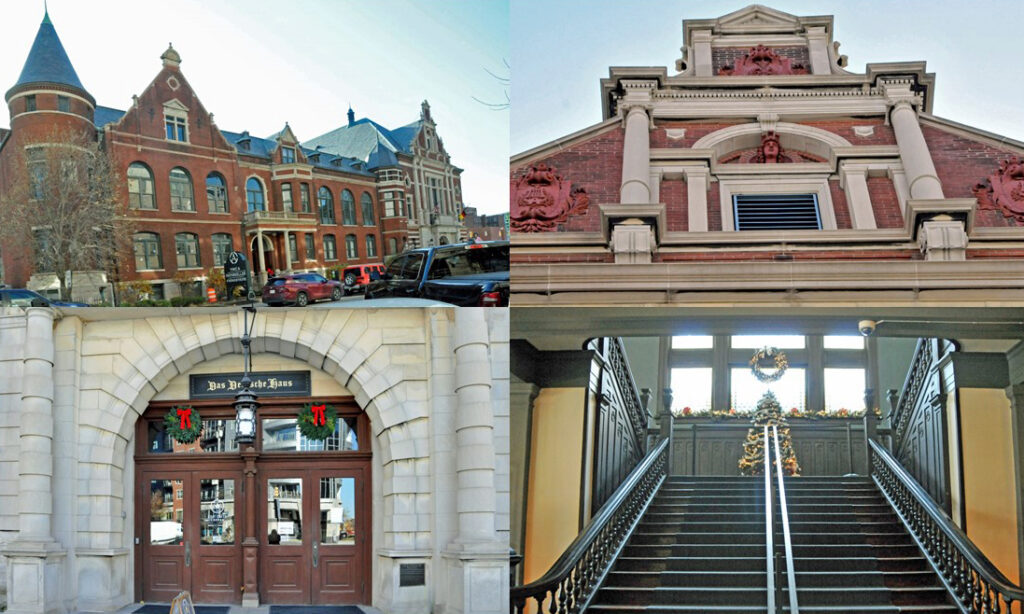The Athenaeum, at 401 East Michigan Street, became a National Historic Landmark in 2016. It was once the center of German social life in Indianapolis.
After an 1848 revolution failed to unify Europe’s German-speaking states, prosperous Germans (the “Forty-Eighters”) began coming to the United States. Upon arrival, they established institutions known from their homeland, including “turnvereins” (gymnastics clubs), where the immigrants could exercise and socialize to develop their ideal “sound mind in a strong body.” In 1851, 26-year-old immigrant Clemons Vonnegut (who founded Vonnegut Hardware Company) and others founded a turnverein in Indianapolis, which merged in 1852 with another turnverein to form what became known as the “Socialer Turnverein.” In 1892, after meeting in various downtown locations, the Socialer Turnverein decided to build a permanent home and purchased two lots at the corner of Michigan and New Jersey Streets for $32,000 (about $1 million today). It engaged renowned local architects Vonnegut and Bohm (founded by Clemons’ son Bernard) to design a suitable building and raised the needed funds through a stock sale. When completed in 1898, “Das Deutsche Haus” (The German House), built in the German Renaissance Revival style, featured an ornate brick and stone exterior and a richly carved hardwood interior. It included a gymnasium, auditorium, ballroom, bowling alleys, beer garden and restaurant (the Rathskeller), now the oldest restaurant in Indianapolis. The building hosted a number of weekly events to acclimate new immigrants to their city.
At a celebration of George Washington’s birthday in February 1918, in the midst of increasing anti-German sentiment in the United States, Das Deutsche Haus changed its name to the “Athenaeum,” after Athena, the Greek goddess of wisdom and war whose terra cotta image inexplicably adorns the building’s highest arch. Today, the Athenaeum annually holds a German Fest, celebrating German culture and the contribution of German immigrants to Indianapolis.
